Beeswax candle molds, an ancient art form, have evolved into a modern tool for creating unique, sustainable, and aromatic candles. From traditional designs to contemporary shapes, these molds offer endless possibilities for candle makers of all levels.
Whether you’re a seasoned crafter or a novice, beeswax candle molds provide a versatile and rewarding way to express your creativity while enjoying the benefits of natural beeswax.
History and Origins of Beeswax Candle Molds
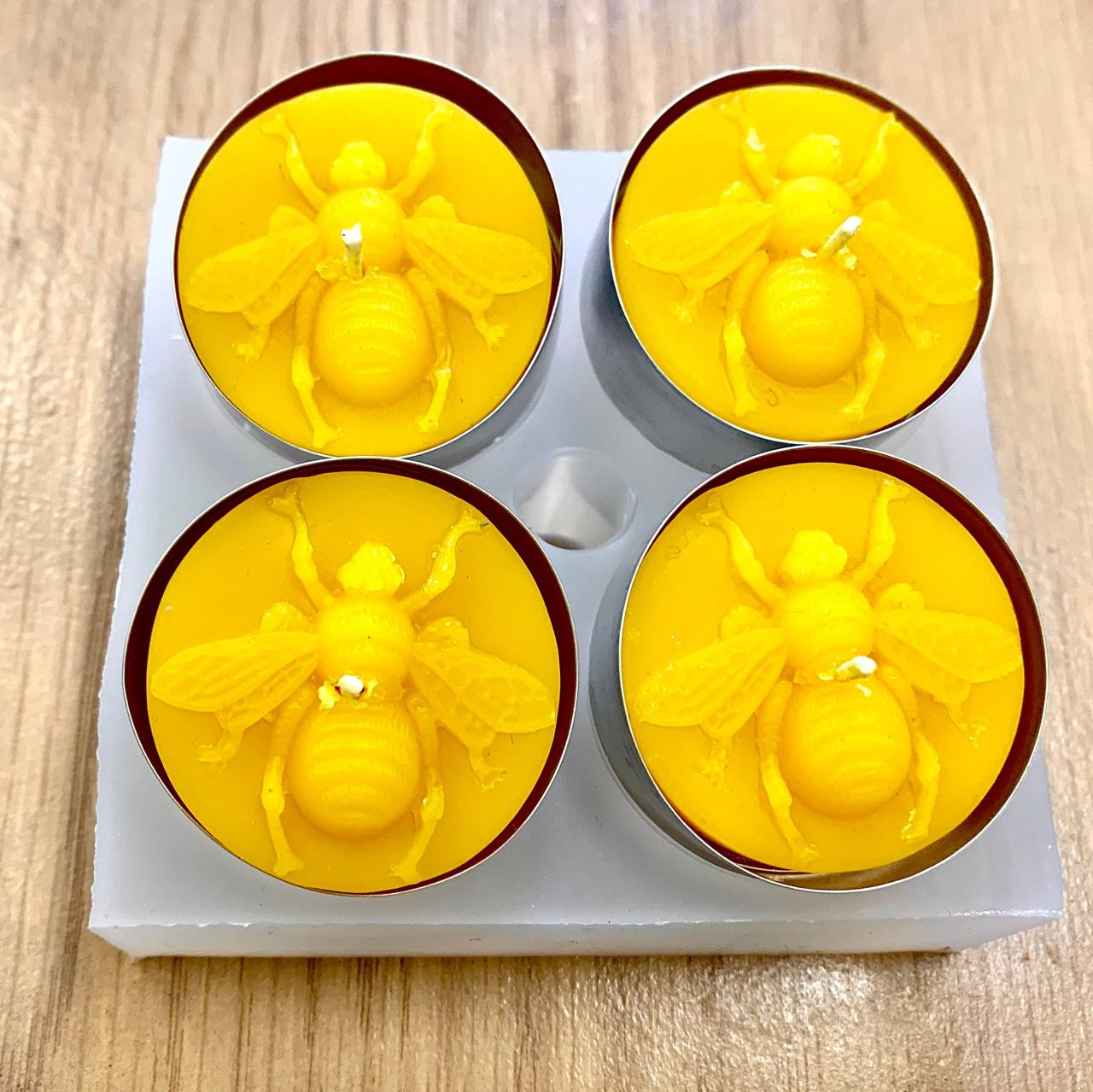
Beeswax has been used in candle making for centuries, with its earliest known use dating back to ancient Egypt. The ancient Egyptians believed that beeswax candles were sacred and used them in religious ceremonies and rituals.
The first beeswax candle molds were simple, open-ended tubes made of clay or metal. These molds were used to create candles with a cylindrical shape. Over time, more elaborate molds were developed, allowing for the creation of candles with a variety of shapes and designs.
Traditional Mold Designs
Traditional beeswax candle molds were often made of wood or metal. Wooden molds were carved with intricate designs, while metal molds were cast in a variety of shapes. Some of the most common traditional mold designs include:
- Cylindrical molds: These molds were used to create candles with a simple, cylindrical shape.
- Tapered molds: These molds were used to create candles with a tapered shape, which were often used for decorative purposes.
- Figural molds: These molds were used to create candles with a variety of figural designs, such as animals, people, and objects.
Modern Mold Designs
Modern beeswax candle molds are made from a variety of materials, including silicone, plastic, and metal. Silicone molds are popular because they are flexible and easy to use. Plastic molds are also popular because they are lightweight and durable. Metal molds are still used to create high-quality candles with intricate designs.
Some of the most common modern mold designs include:
- Round molds: These molds are used to create candles with a simple, round shape.
- Square molds: These molds are used to create candles with a simple, square shape.
- Geometric molds: These molds are used to create candles with a variety of geometric shapes, such as cubes, pyramids, and spheres.
- Freeform molds: These molds are used to create candles with a variety of freeform shapes, such as flowers, animals, and objects.
Types of Beeswax Candle Molds
Beeswax candle molds come in a wide range of shapes, sizes, and materials. Each type offers unique advantages and disadvantages, making it essential to choose the right mold for your specific needs.
Traditional Molds
Traditional beeswax candle molds are typically made of wood or metal and have been used for centuries. They come in various shapes, including cylindrical, tapered, and фигурный.
- Advantages:Durable, long-lasting, and produce well-defined candles.
- Disadvantages:Can be expensive, require careful maintenance, and may not be suitable for complex designs.
Silicone Molds
Silicone molds are a modern alternative to traditional molds. They are flexible, easy to use, and can produce intricate designs.
- Advantages:Affordable, easy to release candles, and allow for detailed designs.
- Disadvantages:Less durable than traditional molds, may not produce as sharp edges, and can be prone to tearing.
Plastic Molds
Plastic molds are lightweight and inexpensive. They are available in a variety of shapes and sizes.
- Advantages:Affordable, lightweight, and easy to use.
- Disadvantages:Not as durable as traditional or silicone molds, may not produce as clean edges, and can be prone to warping.
Gel Molds
Gel molds are specifically designed for making gel candles. They are typically made of clear plastic or glass and allow you to create candles with a suspended gel effect.
- Advantages:Produces unique and decorative candles, allows for layering and embedding.
- Disadvantages:Requires specialized gel wax, can be more challenging to use, and may be more expensive.
Custom Molds
Custom molds are made to order and can be designed to any shape or size. They are ideal for creating unique and personalized candles.
- Advantages:Allows for complete customization, produces unique candles, and can be made from various materials.
- Disadvantages:Expensive, time-consuming to produce, and may require specialized knowledge or equipment.
Materials and Tools for Beeswax Candle Making
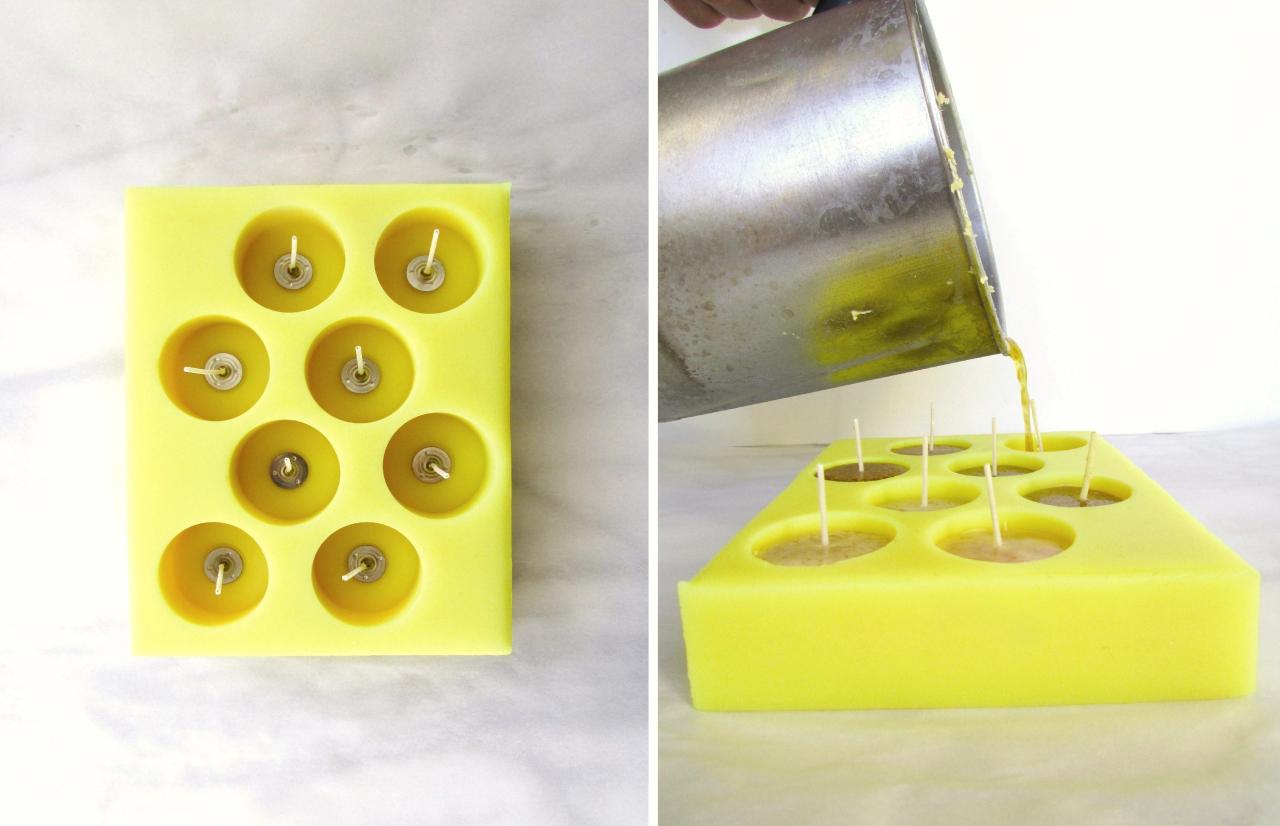
Embarking on the enchanting journey of beeswax candle making requires an array of essential materials and tools. Understanding the properties of beeswax and selecting the appropriate wicks and containers are crucial steps in ensuring a successful and enjoyable experience.
Beeswax, a natural substance produced by honeybees, possesses unique qualities that make it an ideal choice for candle making. Its high melting point, long burn time, and pleasant aroma contribute to its popularity among candle enthusiasts. Beeswax candles are known for their clean, soot-free burn, making them a healthier alternative to paraffin candles.
Materials
- Beeswax:Pure beeswax or a blend of beeswax and other natural waxes, such as soy or coconut wax.
- Wicks:Choose wicks specifically designed for beeswax candles, ensuring they are the correct size and type for the diameter of your candle.
- Containers:Select heat-resistant containers, such as glass jars, metal tins, or ceramic vessels, that can withstand the heat of melted beeswax.
Tools
- Double boiler or melting pot:A double boiler or melting pot allows you to melt beeswax safely and evenly, preventing it from burning.
- Thermometer:A thermometer is essential for monitoring the temperature of the melted beeswax, ensuring it reaches the optimal pouring temperature.
- Stirring spoon:A heat-resistant stirring spoon is used to gently stir the melted beeswax, ensuring an even distribution of color and fragrance.
- Wick centering tool:A wick centering tool helps to keep the wick centered in the container, preventing it from shifting during the pouring process.
- Safety equipment:Gloves and safety glasses are recommended to protect yourself from hot beeswax and potential fumes.
Step-by-Step Guide to Using Beeswax Candle Molds
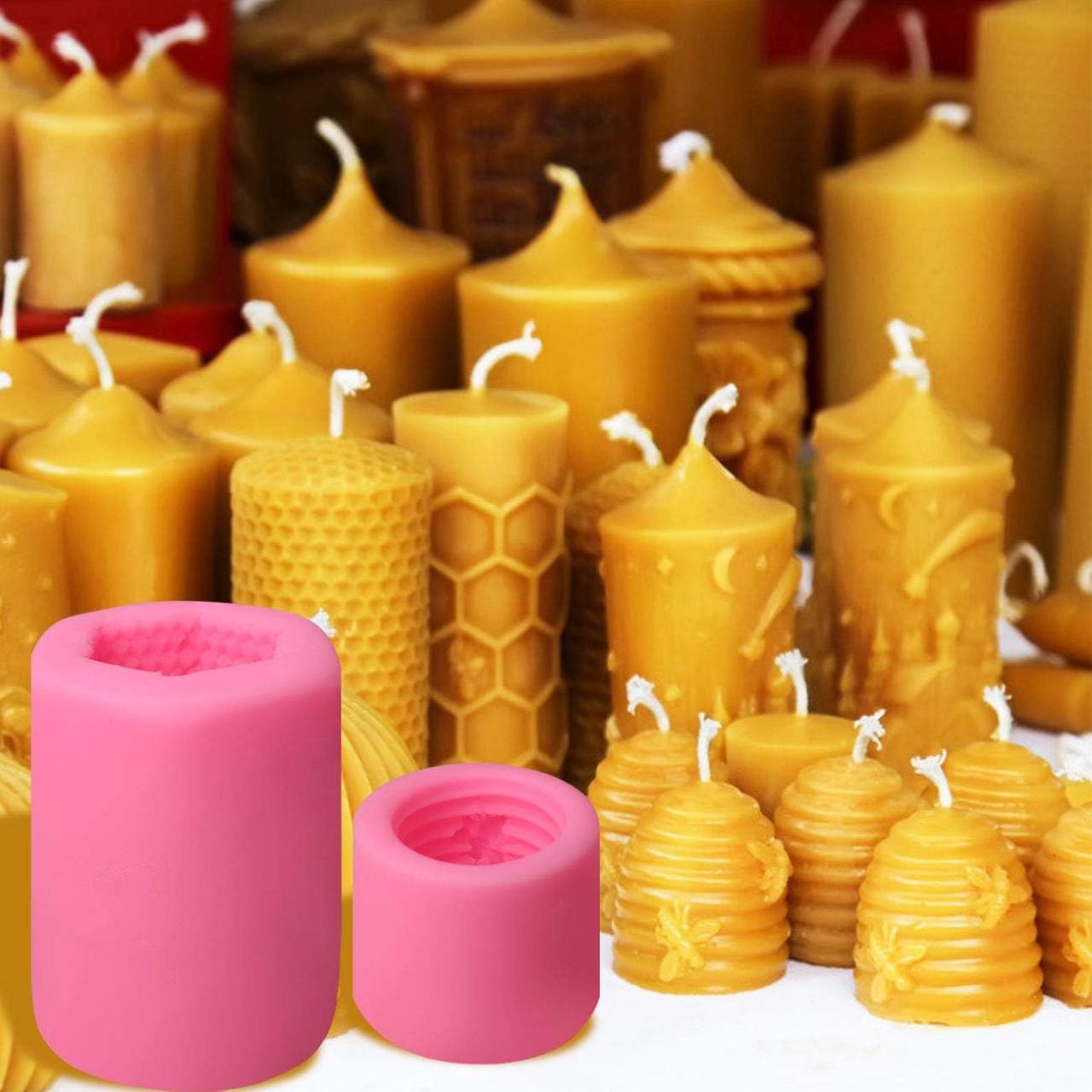
Using beeswax candle molds is a rewarding and straightforward process. Follow these steps to create beautiful and fragrant beeswax candles:
Materials
Before beginning, ensure you have gathered all necessary materials:
- Beeswax
- Beeswax candle molds
- Double boiler or microwave
- Wicks
- Thermometer (optional)
- Candle dye (optional)
- Fragrance oil (optional)
Melting the Beeswax
Break the beeswax into small pieces and place them in the top of a double boiler. Fill the bottom of the double boiler with water and bring it to a boil. The steam from the boiling water will gently melt the beeswax.
Alternatively, you can melt the beeswax in a microwave-safe bowl on high for 30-second intervals, stirring in between, until completely melted.
Preparing the Molds, Beeswax candle molds
While the beeswax is melting, prepare your molds. If desired, lightly coat the inside of the molds with a thin layer of vegetable oil or cooking spray to prevent the candles from sticking. Insert the wicks into the center of the molds, leaving about 1 inch of the wick exposed at the top.
Pouring the Beeswax
Once the beeswax is melted, remove it from the heat. If desired, add candle dye or fragrance oil and stir well. Use a thermometer to ensure the beeswax is between 140-150°F (60-66°C). Carefully pour the melted beeswax into the prepared molds, filling them to the top.
Cooling and Demolding
Allow the candles to cool completely at room temperature. This may take several hours or overnight. Once cooled, gently remove the candles from the molds. If the candles are sticking, place them in the freezer for 15-30 minutes to make them easier to remove.
Troubleshooting
- Bubbles in the candles:This can be caused by air bubbles in the beeswax. Try pouring the beeswax more slowly or tapping the molds gently to release any air bubbles.
- Cracked candles:This can be caused by cooling the candles too quickly. Allow the candles to cool completely at room temperature before removing them from the molds.
- Candles not burning evenly:This can be caused by the wick being too short or too long. Trim the wick to 1/4 inch before each use.
Benefits and Uses of Beeswax Candles
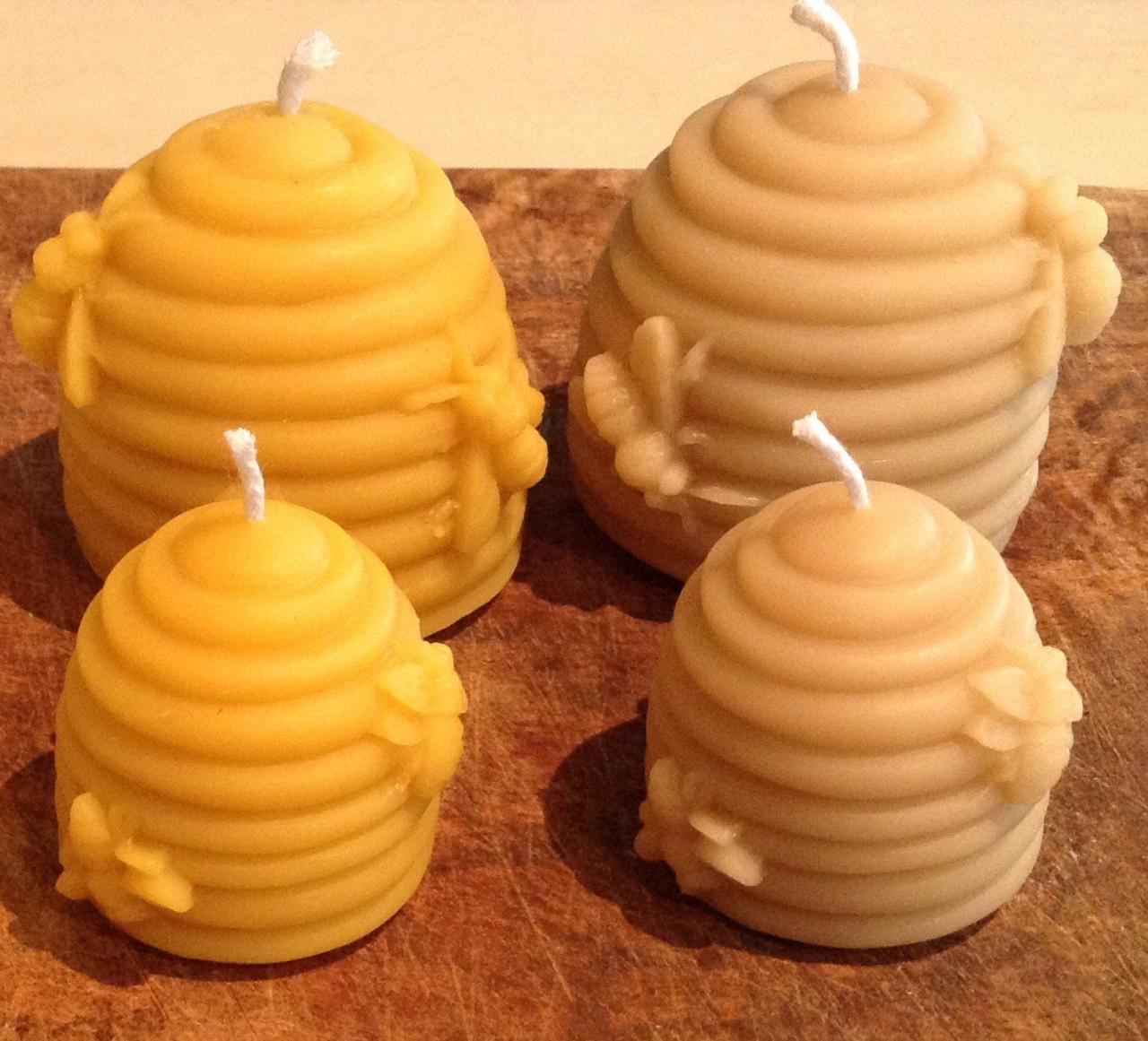
Beeswax candles have been used for centuries for their unique properties and benefits. They are not only environmentally friendly but also offer numerous health advantages. Additionally, beeswax candles can be used for various purposes, including aromatherapy and decoration.
Environmental Benefits
- Beeswax candles are made from natural and renewable resources, making them an environmentally sustainable choice.
- They do not produce harmful pollutants or toxins, unlike paraffin candles, which release soot and chemicals into the air.
- Beeswax candles burn cleanly and have a longer burn time compared to other types of candles.
Health Benefits
- Beeswax candles emit negative ions when burned, which help to purify the air and reduce allergens and pollutants.
- They have antibacterial and antifungal properties, making them effective in combating airborne bacteria and mold.
- The natural honey scent of beeswax candles can promote relaxation and sleep.
Uses
- Aromatherapy:Beeswax candles can be infused with essential oils to create a relaxing or invigorating atmosphere.
- Decoration:Beeswax candles come in various shapes and sizes, making them a beautiful addition to any home décor.
- Rituals and ceremonies:Beeswax candles have been used in religious and spiritual ceremonies for centuries due to their symbolic and purifying qualities.
Indoor Air Quality
Studies have shown that beeswax candles have a positive effect on indoor air quality. The negative ions released when burned help to neutralize pollutants and reduce the concentration of dust, pollen, and other allergens in the air. This can improve breathing and reduce the risk of respiratory problems.
Sustainability and Ethical Considerations
Beeswax candle making offers a sustainable and eco-friendly alternative to conventional candle-making practices. Beeswax is a natural and renewable resource, produced by honeybees as they build their hives. Unlike paraffin wax, which is derived from fossil fuels, beeswax is biodegradable and does not release harmful toxins into the environment.
Ethical considerations also play a vital role in beeswax candle making. Responsible beekeeping practices ensure the well-being of honeybee colonies and support the delicate balance of our ecosystem. Sourcing beeswax from ethical beekeepers who prioritize sustainable beekeeping techniques, such as avoiding the use of pesticides and antibiotics, is crucial for maintaining healthy bee populations.
Reducing Waste and Environmental Impact
Minimizing waste and reducing the environmental impact of candle making is essential. Here are some tips to consider:
- Use beeswax scraps and remnants to create new candles or other beeswax products.
- Recycle or reuse candle containers and packaging materials.
- Opt for sustainable wicks made from natural materials like cotton or wood.
- Consider using solar or wind energy to power your candle-making process.
By embracing sustainability and ethical practices, beeswax candle makers can contribute to a more environmentally conscious and responsible industry.
Outcome Summary
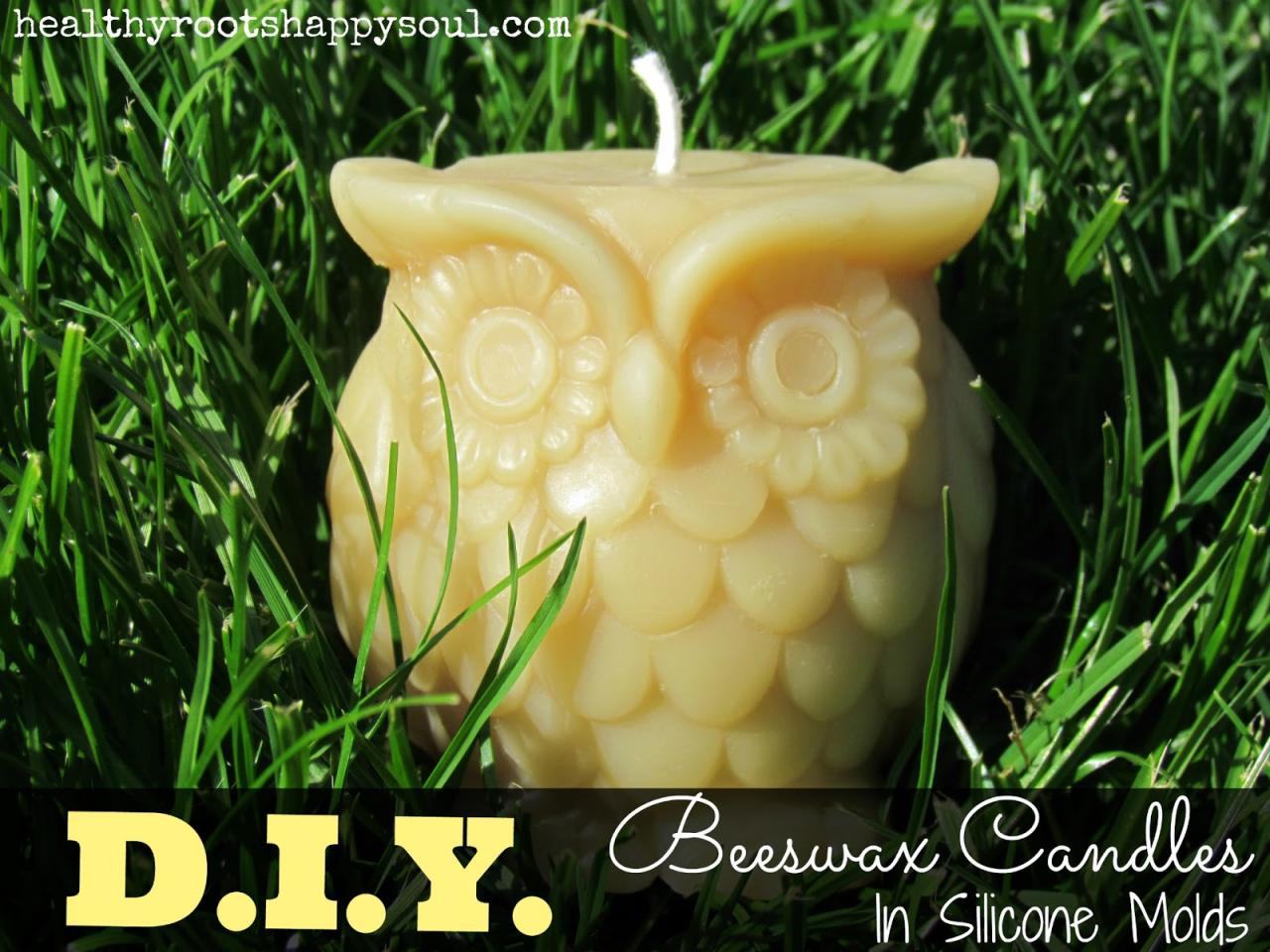
In the realm of candle making, beeswax candle molds stand out as a sustainable and versatile tool. With a wide range of shapes, sizes, and materials to choose from, these molds empower crafters to create candles that are both beautiful and beneficial.
By embracing the art of beeswax candle making, we not only enjoy the warm glow and sweet aroma of natural candles but also contribute to a more sustainable and eco-friendly lifestyle.


